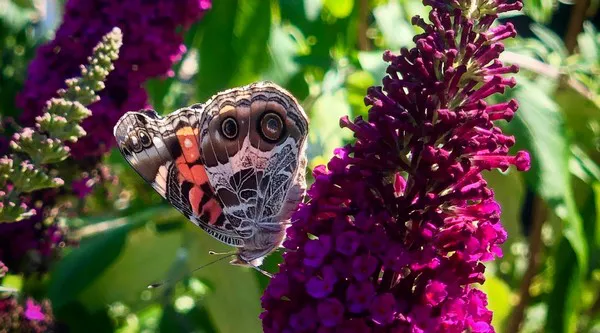Cultivating a thriving squash garden is a pursuit that gardeners embark upon with enthusiasm, anticipating the bountiful harvest that these versatile plants can provide. However, the success of your squash harvest is intricately linked to the balance between male and female flowers. Female flowers are the precursors to the delectable squash fruits, making them a pivotal aspect of a prolific harvest.
Understanding Squash Flower Anatomy: Unveiling the Distinctive Features
To comprehend how to encourage more female flowers, it’s imperative to understand the anatomy of squash flowers. Squash plants produce separate male and female flowers on the same vine. Male flowers typically appear first and outnumber female flowers. The key distinction lies in the presence of a tiny fruit at the base of the female flower, signifying its potential to develop into a squash. Recognizing this distinction is the first step in fostering an environment conducive to an abundance of female flowers.
Optimal Growing Conditions: Setting the Stage for Flourishing Blooms
Creating the ideal environment for your squash plants is foundational to promoting the growth of more female flowers. Squash thrives in full sunlight, requiring at least six to eight hours of direct sunlight daily. Ensure that your garden soil is well-draining and rich in organic matter. Adequate spacing between plants allows for optimal air circulation, reducing the risk of diseases that could hinder flower production. By providing these optimal growing conditions, you lay the groundwork for a healthy and prolific squash garden.
Balanced Nutrition: Feeding the Plants for Floral Abundance
Squash plants, like all flowering plants, benefit significantly from a well-balanced and nutrient-rich diet. Nitrogen, phosphorus, and potassium are essential elements that contribute to overall plant health and flower production. However, an excess of nitrogen can lead to an abundance of lush foliage at the expense of flower development. To strike the right balance, opt for a fertilizer with a higher phosphorus content, encouraging robust root development and prolific flowering. Applying a balanced fertilizer during the growing season supports the nutritional needs of your squash plants, promoting a flourishing garden.
Companion Planting Strategies: Harnessing Nature’s Synergy
Companion planting involves strategically placing plants in close proximity to enhance each other’s growth and deter pests. When it comes to encouraging more female flowers on squash plants, companion planting can be a valuable ally. Nasturtiums, for instance, are known to attract pollinators like bees, ensuring efficient pollination of squash flowers. Planting marigolds can help deter nematodes, contributing to the overall health of your squash plants. Exploring companion planting strategies harnesses the synergy of nature, creating a harmonious environment for flourishing squash blooms.
Pruning Techniques: Enhancing Energy Allocation
Pruning is a horticultural practice that involves selectively removing specific parts of a plant to direct energy toward essential areas. When aiming to boost the production of female flowers on squash plants, judicious pruning can be a valuable tool. Removing excess foliage and lateral shoots redirects the plant’s energy towards flower and fruit development. Be cautious not to over-prune, as a balance between foliage and flowers is essential for overall plant health. Pruning offers a strategic approach to optimizing the allocation of resources, fostering an environment conducive to prolific female flower production.
Hand Pollination: Taking Control of the Pollination Process
Squash plants typically rely on pollinators, especially bees, for the transfer of pollen between male and female flowers. However, environmental factors or the absence of sufficient pollinators can sometimes limit successful pollination. In such cases, gardeners can take matters into their own hands through hand pollination. Gently transferring pollen from male to female flowers using a small brush or cotton swab ensures effective pollination, increasing the likelihood of more female flowers developing into mature squash fruits.
Managing Environmental Stress: Mitigating Factors Affecting Flower Production
Squash plants are susceptible to stress factors that can impact flower production. Environmental stressors such as extreme temperatures, inadequate watering, or fluctuations in weather conditions can hinder the development of female flowers. Consistent and adequate watering, especially during dry spells, helps alleviate stress and promotes optimal flower production. Mulching around squash plants helps regulate soil temperatureand moisture, creating a stable environment for the plants to thrive.
Celebrating Success: Recognizing the Fruits of Your Labor
As you implement these strategies to encourage more female flowers on your squash plants, take the time to celebrate the success of your efforts. The sight of burgeoning squash fruits signifies not only a bountiful harvest but also the culmination of a well-nurtured garden. Regular monitoring, diligent care, and an understanding of your squash plants’ needs contribute to a flourishing garden that rewards your commitment with an abundance of fresh, homegrown squash.
Conclusion
Cultivating a garden teeming with squash abundance is an art that combines horticultural knowledge with a genuine passion for plants. By understanding the nuances of squash flower development and implementing targeted strategies, you can foster an environment that encourages the growth of more female flowers. From optimal growing conditions to companion planting and careful pruning, each step contributes to the overall health and productivity of your squash garden. Embrace the journey of nurturing your squash plants, and revel in the joy of a garden adorned with flourishing blooms and the promise of a plentiful harvest.


